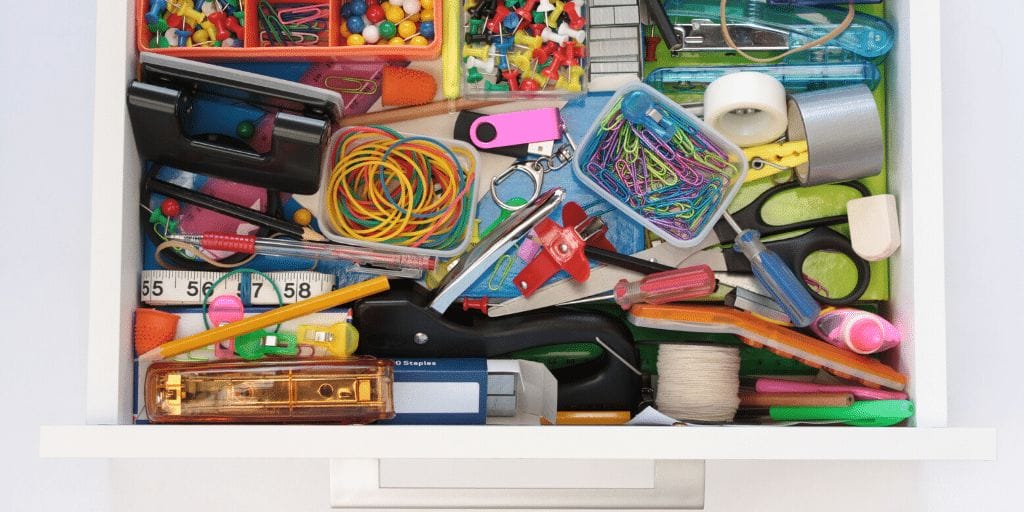The following activity is part of a series we’re creating to support students, teachers, and caregivers, during this unprecedented time. Read more about the project here. If you try this activity with your student(s), we’d love to see what you do. Share your journey via the #Inspired2Learn hashtag on your preferred social platform.
Created by: Jenna Fournel
Discipline: Writing
Age level: preK – 12 (see adaptation for young children)
Time: Half an hour, to days on end if you get inspired!
Materials: A collection of about 20 random items from your junk drawer, coat pockets, or other spots that accumulate odds and ends. The best items are those that suggest a story like ticket stubs, buttons, branded pens, pieces of jewelry, keychains, old grocery lists, receipts, etc. Writing materials.
What to do:
- Ask students to group the items they’ve collected into 3-5 piles.
- Invite students to choose one pile at a time and figure out who each pile might belong to. Have them write down a description of the person they imagine. This is even more fun if you do it too. Keep writing characters until you’ve described one for each of the piles.
- Have everyone who has been writing share the characters they’ve created with each other. If you are using a tool like google docs, the document can be shared with multiple people and students can share their writing with each other this way.
- Now that you have an interesting cast of characters, you can take this writing in several directions. Here are a few examples:
- Choose the two characters who are most dissimilar and write a conversation between them.
- Imagine a gathering where all these characters are in the same place at the same time. Write about what happens to them.
- If you have more than one writer, have each writer choose one of the characters and write down a description of that character’s morning up until 11:00. Share the writing with each other, then figure out how these characters meet and finish the day together.
- Choose one object from any of the piles. Write a story in which that object holds significance for all the characters that were created.
- Choose one of the characters that was created and write about how they’d respond to a series of possible events such as, the release of a brand new video game, getting in trouble for breaking a rule, drinking scalding coffee, getting a bad haircut, being asked to give a speech to an audience of 5,000 people, etc.
Writing Modifications:
If you are a teacher assigning this project virtually to your class, consider sending them a photo of a collection of items and having each student craft a description of a character based on those items. If students share those characters in a collaborative google folder, you could then have them choose another character from those described and write a story in which these characters interact. Students will be interested to see how different people came up with different characters based on the same set of objects.
If your students struggle to write their ideas down, consider having them record their ideas on a voice app. Google docs has a feature that enables voice typing and that can help struggling writers to see their ideas take shape.
Adaptation for early childhood: You can do this activity with young students who haven’t started writing yet. Talk through their ideas with questions like, “Let’s imagine a person who had these things in their pocket. What do you think that person would be like? Why do you think they might have these things in their pocket? Where do you think they might live?” As your student responds to these questions, write down what they say so they can see their ideas begin to take shape on the page. (If you are a teacher assigning this activity virtually, parents or guardians can send you pictures of the work students have completed.) In addition, you can have them draw a picture of the character they imagine.
Inspired Teaching Connection
Starting a writing assignment with objects offers a safe and comfortable entry point, and gets the creative juices flowing for writers. In this way, students are intellectually, emotionally, and physically engaged. Additionally, conventional writing prompts put the teacher or prompter in the position of determining the content and focus of student writing. In this exercise, students drive the action, positioning them as the experts of their own stories.
See our instructional model here.

